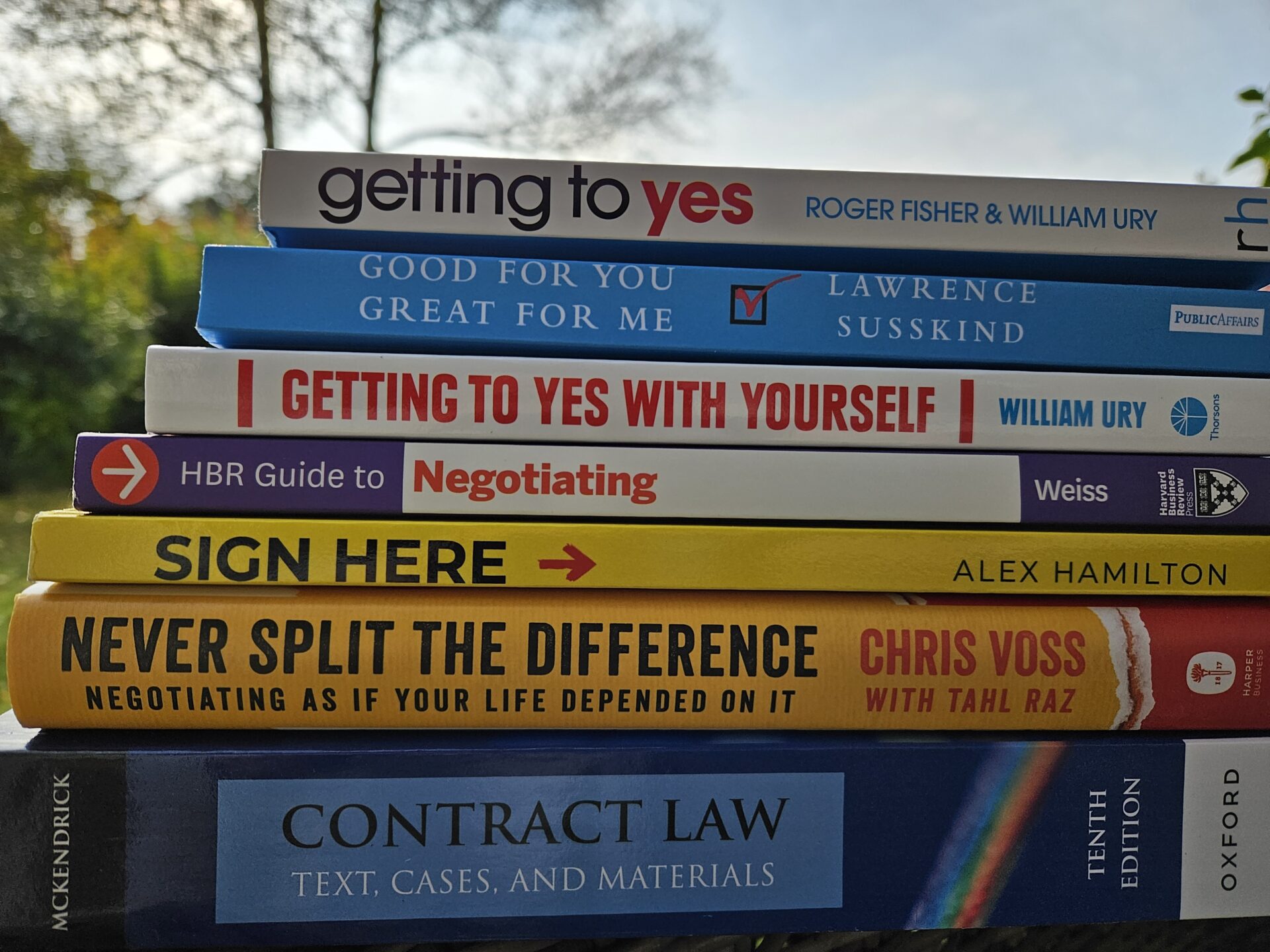
Why Saying “That’s Right” Is a Great Negotiation Strategy
Introduction – Starting With The Basics
When negotiation, the ability to build trust and rapport with your counterpart is of huge importance. It should be part of any successful negotiation strategy. Negotiations are about connections between people, so do not loose sight of this when negotiating prices or a contract. See this article for more tips on live negotiations.
Do not forget is it even one of the basic principles of the Harvard Negotiation Principles. When building this connection with your counterpart, it is one of your best strategies to achieve a “that’s right” reaction from the other party. This simple yet powerful affirmation can significantly shift the dynamics of a negotiation in your favor as your counterparty will feel heard and understood, which will in turn lead to a better negotiation.
Getting to the “That’s Right” Moment
As we have seen in daily practice, and as highlighted by Chris Voss in his book “Never Split the Difference, one of the most effective strategies to building rapport is the art of eliciting a “that’s right” moment from the other party.
To be successful in receiving or giving this reaction, you will need to actively listen, empathize, and demonstrate a deep understanding of their position. By using techniques like mirroring, labelling or paraphrasing, you can set out the foundation to make the counterpart more receptive. This acknowledgment can break down barriers and invite a more honest and cooperative dialogue. It shows the other party that you value their perspective, resulting to a more collaborative negotiation process.
Building Trust and Understanding
In negotiations, achieving a “that’s right” moment means that the other party feels heard and understood. This feeling of being understood is a fundamental human need and, when met, can transform the negotiation landscape. When the other party says, “that’s right,” it indicates that you have accurately captured their concerns, desires, and motivations. This not only builds trust but also encourages them to be more open and flexible in finding a mutually beneficial solution.
The Power of Admitting Mistakes
At AMST Legal we even go further: you should also actively work towards saying ‘that’s right’ to your counterparty. Admitting that the counterparty made a good point or that she found an error in one of your documents is a powerful message.
Gaining Respect and Trust
Admitting mistakes and acknowledging the validity of the other party’s points is a powerful tool in negotiations. When you say “that’s right”, you show that you are not just in it to win but are also willing to concede and find common ground. As I have seen in a number of negotiations, this approach can disarm even the toughest negotiators and build a foundation of mutual respect and trust.
Don’t be hesitant admitting that your counterparty made a good point. At AMST Legal we say: works towards it!
Why admitting great point is a great negotiation Strategy
This vulnerability can humanize you in the eyes of the other party, making them more likely to trust and respect you. This, in turn, can lead to smoother negotiations and better outcomes for both sides.
Practical Strategies for Implementing “That’s Right”
To effectively use the “that’s right” negotiation strategy, consider the following practical steps:
- Active Listening: Truly listen to the other party without preparing your counterarguments in your head. Show that you understand by summarizing their points accurately. This involves not just hearing their words but also understanding their underlying concerns and motivations.
- Empathy Statements: Use phrases like “I understand how you feel” or “It sounds like…” to convey empathy and acknowledgment. These statements can help the other party feel validated and understood, which can reduce tension and foster a more collaborative atmosphere.
- Reflect and Validate: Reflect on what the other party has said and validate their feelings and perspectives. This does not mean you agree, but that you understand. Validation can be a powerful tool in building rapport and trust, as it shows that you are paying attention and taking their concerns seriously.
- Admit Your Mistakes: If you realize you’ve made an error or there’s a valid point from the other side, acknowledge it openly. Saying “I was wrong” can be powerful when building trust. Admitting mistakes can also show that you are confident and secure enough to own up to your errors, which can enhance your credibility and respectability.
- Seek Win-Win Solutions: Frame your negotiations around finding mutually beneficial outcomes. Show that you’re willing to make concessions for the greater good of both parties. This approach can create a more positive and productive negotiation environment, where both sides feel like they are working towards a common goal.
Other Experts confirming this Strategy
In addition to Chris Voss in his book Never Split the Difference, other experts have emphasized the importance of trust and understanding in negotiations. Please see below a list of three other leading Negotiation Experts confirming this approach.
The 7 Habits of Highly Effective People
Stephen Covey discusses in his book the principle of “Seek First to Understand, Then to Be Understood” as a fundamental habit for effective interpersonal communication. This aligns perfectly with the concept of achieving “that’s right” moments by demonstrating genuine understanding and empathy.
“When you show deep empathy toward others, their defensive energy goes down, and positive energy replaces it. That’s when you can get more creative in solving problems.” – Stephen R. Covey. Read more about Covey’s principles at FranklinCovey.
Getting to Yes: Negotiating Agreement Without Giving In
Roger Fisher and William Ury highlight in their book that changed the world of negotiation the importance of separating people from the problem and focusing on interests rather than positions. Understanding the other party’s interests can lead to more effective and amicable negotiations.
“Understanding the interests behind the positions helps negotiators find common ground and create win-win solutions.” – Roger Fisher and William Ury. Learn more from the Harvard Negotiation Project.
How to Win Friends and Influence People
Dale Carnegie’s timeless advice on building relationships and influencing people underscores the power of making the other party feel valued and understood.
“The deepest principle in human nature is the craving to be appreciated.” – Dale Carnegie. Explore Carnegie’s teachings at Dale Carnegie Training.
Conclusion
At AMST Legal, we have witnessed firsthand how these strategies transform negotiations. By striving for “that’s right” moments and being willing to admit our own mistakes, we foster an environment of trust and respect. This approach not only smooths the negotiation process but often leads to more sustainable and satisfactory agreements for all parties involved.
Incorporating the “that’s right” strategy into your negotiation toolkit can significantly enhance your ability to build trust, foster cooperation, and achieve successful outcomes. It emphasizes the importance of understanding, empathy, and humility in negotiations, which are key components in building long-lasting and mutually beneficial relationships.

How to Improve Your Negotiation – 7 Best Books to Read
7 Great Books to start with when you want to improve your Negotiation style. You will absolutely see that you will be a better negotiator if you apply the lessons mentioned in these books.
